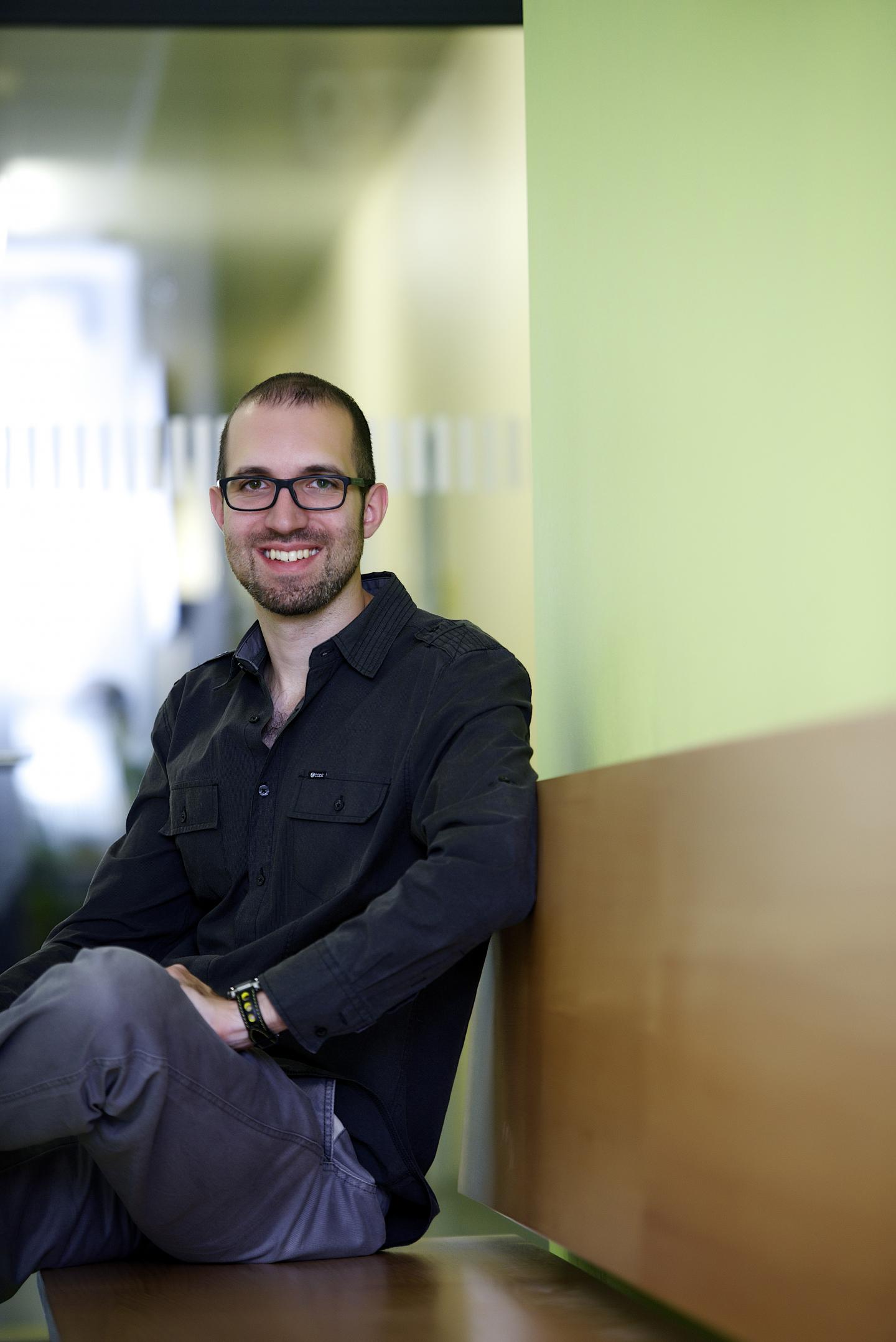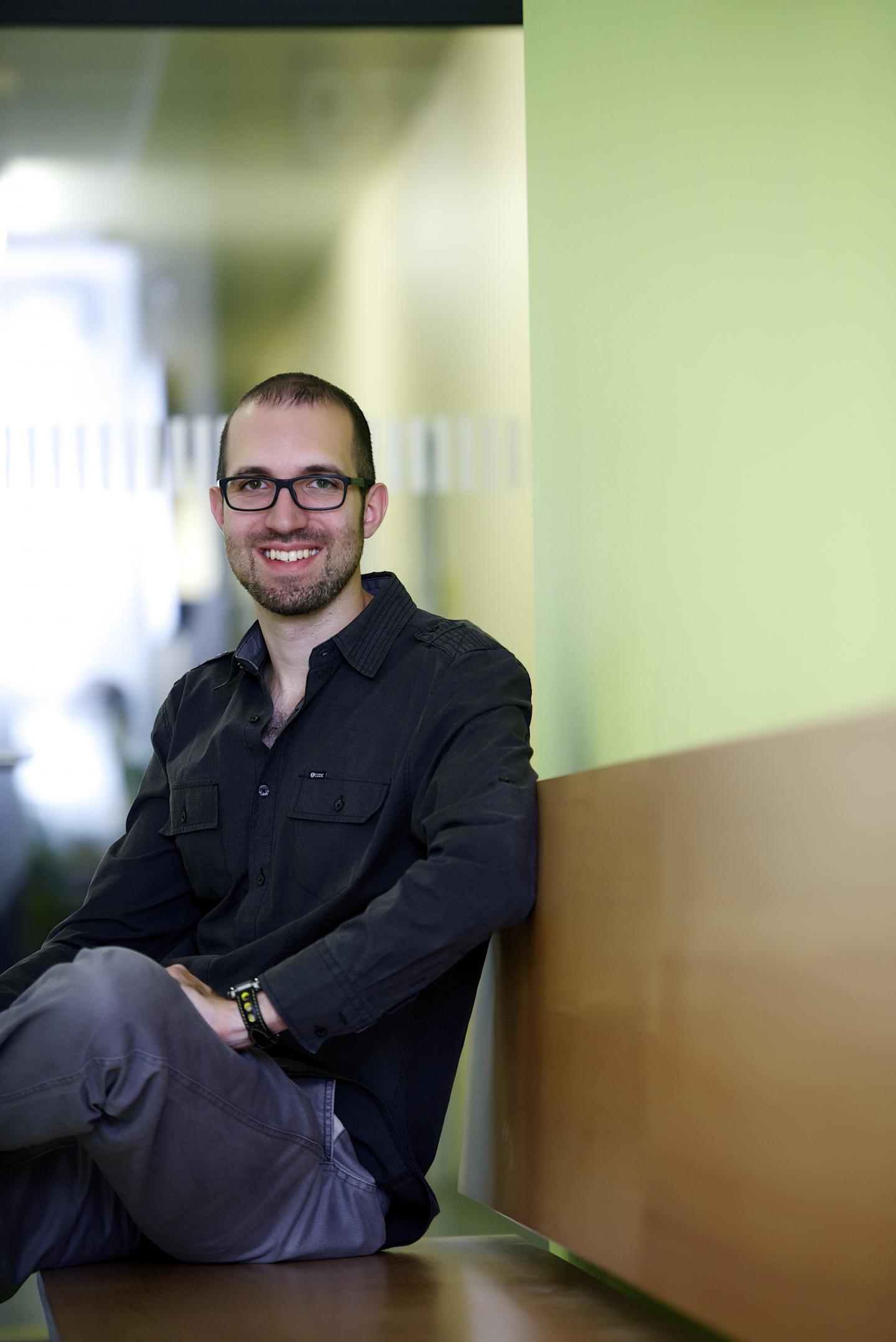
Credit: University of Konstanz
In nature, bacteria occur mostly in multi-cellular collectives, rather than as individuals. They are capable of coordinating their behaviour, with some species even being able to move together in swarms. The biological chemistry junior research group at the University of Konstanz investigates the ways in which organisms can manipulate and, above all, inhibit this kind of behaviour. Group leader and principal investigator Dr Thomas Böttcher, his team and doctoral researcher Sina Rütschlin (née Richter) have examined the biosynthesis of one of these swarming inhibitors, finding that its production depends upon specific conditions at the substrate level of the bacterial cell. There is an important evolutionary aspect to this: the working group was able to demonstrate how bacterial cells produce various natural substances using minimum effort. In the future, these findings may well come to play an important role in combating infectious diseases and antibiotic resistance. They have been published in the current online issue of the science journal Cell Chemical Biology.
Swarming renders bacteria much more resistant to antibiotics. At times, swarming bacteria tolerate even a ten- or hundredfold increase in antibiotic dose. While a post-doc in the US, Thomas Böttcher was able to isolate two bacteria strains from a red algae sample: Vibrio alginolyticus, which swarms quickly, and Shewanella algae, which inhibits this movement, limiting its rival's drive towards expansion. Shewanella algae achieves this via secretion of a so-called siderophore, which is produced by the strain itself and allows the bacteria to absorb ferric iron from the environment.
The question is: how exactly is this siderophore produced? When sequencing the bacteria, the researchers found a gene cluster that may be responsible for siderophore production on the cellular level. "Our main finding was that, contrary to what we had expected, the enzyme does not produce the relevant siderophore because of its specificity, but that it is the cellular substrate pool that governs the production process", says the chemist, who is a fellow of the Zukunftskolleg at the University of Konstanz. The study revealed that the isolated enzyme had its main specificity for an entirely different metabolite as compared to the living cell. It appears that the cell can regulate its building blocks to produce a metabolite that the responsible enzyme would not necessarily favour, but which benefits the cell in important ways.
"The bacterial cell manipulates the substrates to produce three metabolites all at the same time. This creates variability, which allows for the efficient production of a variety of metabolites", explains Thomas Böttcher. This, in turn, drives rapid evolutionary adaptation.
There are consequences to the fact that the enzyme does not seem to specialise in the production of a main metabolite, but that several metabolites are created, the production of which is being regulated on the substrate level. A common practice until now has been to introduce gene sequences from environmental samples to well-manageable laboratory bacteria, leading to the production of metabolites. However, as the researchers demonstrated, these metabolites may not be the ones that are produced in nature. It is therefore all-important to know the cell's substrate pool in order to be able to predict the correct products.
###
Original publication:
Sina Rütschlin, Sandra Gunesch and Thomas Böttcher: One Enzyme, Three Metabolites: Shewanella algae Controls Siderophore Production via the Cellular Substrate Pool. Cell Chemical Biology (2017).
DOI: http://doi.org/10.1016/j.chembiol.2017.03.017
Facts:
- Funded by the Emmy Noether Programme of the German Research Foundation (DFG) and the Zukunftskolleg of the University of Konstanz.
- Entdeckung des Schwarminhibitors Avaroferrin: T. Böttcher, J. Clardy: Angewandte Chemie Int. Ed., 53, 3510 (2014).
Note to editors:
You can download a photo here:https://cms.uni-konstanz.de/fileadmin/pi/fileserver/2017/Thomas%20B%C3%B6ttcher.jpg
Caption: Dr Thomas Böttcher
Contact
University of Konstanz
Communications and Marketing
Phone: + 49 7531 88-3603
E-Mail: [email protected]uni.kn
Media Contact
Julia Wandt
[email protected]
https://cms.uni-konstanz.de/en/university-of-konst
############
Story Source: Materials provided by Scienmag





